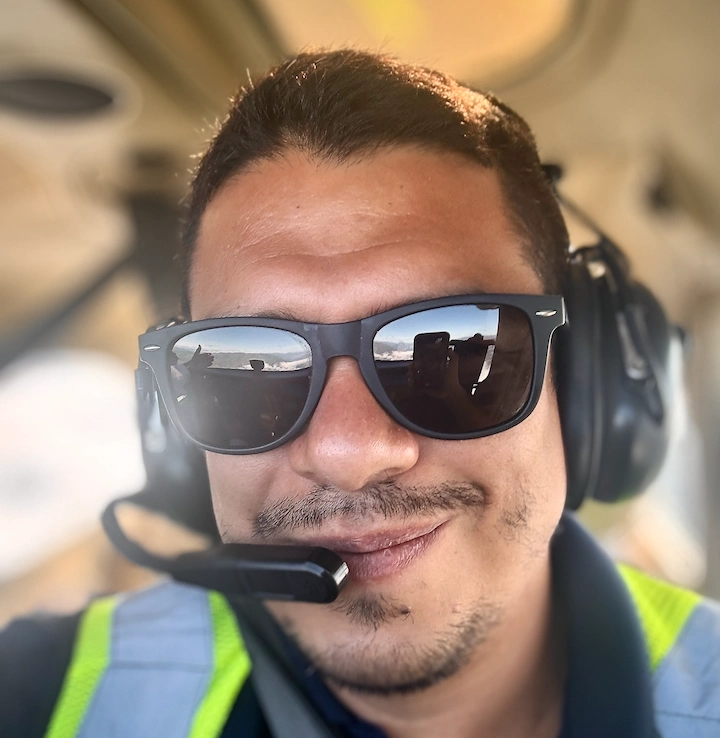
Financial Planning for Flight Schools
In today’s aviation world, one thing is clear—running a flight school is more complex and expensive than ever. Rising fuel costs, increasing aircraft maintenance expenses, instructor shortages, and economic volatility are all pressing down on your margins. If you’re feeling the squeeze, you’re not alone. But here’s the good news: with smart financial planning, your flight school can not only survive—it can thrive.
Flight schools play a crucial role in shaping the next generation of aviators, yet many owners are navigating uncharted financial skies. To remain competitive and sustainable, it’s vital to implement financial strategies tailored to this high-stakes industry. Smart planning doesn’t just mean cutting costs—it means optimizing systems, maximizing value, and investing where it matters most.
Let’s dive into practical, proven strategies that will help you future-proof your business, increase cash flow, and boost profitability even as training costs climb.
Why Flight Schools Must Rethink Their Financial Strategy Now
The cost of training a private pilot has surged, with many programs exceeding $14,000 for a private certificate alone. The price tag for career-track students can skyrocket to $80,000 or more. Inflation, fuel volatility, and supply chain constraints have only intensified the pressure.
For flight school owners, this raises critical questions:
- How do you keep training affordable while maintaining profit margins?
- How do you manage cash flow when student payments are sporadic?
- How do you invest in new technology or aircraft without overextending?
- How can you anticipate challenges and seize growth opportunities before competitors do?
The answer lies in strategic financial planning, not reactive budgeting. You need a flight plan, not just a fire extinguisher.
1. Shift from Reactive Budgeting to Proactive Forecasting
Most flight schools operate on a reactive model—only adjusting when issues arise. That’s risky in today’s economic climate. A minor misstep in cash flow or an unexpected maintenance bill can stall growth or force painful cutbacks.
Instead, implement monthly and quarterly cash flow forecasting. Project your income and expenses for at least 6 to 12 months. Factor in:
- Seasonal trends in student enrollment
- Aircraft maintenance schedules and planned downtime
- Instructor availability and staffing needs
- Insurance premiums and regulatory costs
- Inflation-adjusted fuel, parts, and labor costs
Use budgeting tools or integrate these forecasts into your CRM for real-time insight. When you know what’s ahead, you can avoid turbulence.
2. Use the Right Flight School CRM to Boost Financial Clarity
Your CRM system isn’t just a marketing tool—it should be your financial compass, guiding every decision.
With Right Rudder Marketing’s Flight School CRM, you can:
- Track prospective students from lead to enrollment
- Automate follow-ups and reduce no-shows
- Monitor conversion rates and cost per lead
- View real-time sales pipeline health
- Set financial goals and track enrollment-based revenue
This aviation-specific CRM transforms your entire sales and operations workflow. Instead of guessing where your income is coming from, you’ll have clear visibility into your most profitable funnels and student pipelines.
3. Diversify Your Revenue Streams
Flight training is your core, but it shouldn’t be your only source of income. Diversification is key to creating financial resilience and opening new growth avenues.
Consider adding:
- Aircraft rentals for certificated pilots
- Simulator time for instrument and commercial prep
- Branded merchandise, pilot gear, and flight kits
- Online ground school courses and hybrid training models
- Corporate events or discovery flight packages
- Maintenance services or fuel sales if space allows
Each of these adds stability and lowers your dependence on any single source of revenue. Bonus: many of these options also double as marketing opportunities.
4. Offer Creative Payment and Financing Options
Sticker shock is one of the top reasons students hesitate to commit. Make aviation more accessible—and improve your cash flow—by offering flexible options:
- Pay-as-you-go training plans for incremental progress
- Bundled discounts for full certificate programs
- Financing options through lenders like Meritize or Stratus
- Subscription-style training memberships
- Gift certificates for discovery flights and first lessons
- Custom pricing for high school and college pathway programs
When paired with automated email sequences and follow-ups through your CRM, these options help retain leads who aren’t ready to commit yet.
5. Streamline Operations and Reduce Waste
Every wasted dollar is a missed opportunity to grow.
Perform regular audits of your:
- Aircraft utilization and flight hours per tail number
- Instructor availability and scheduling gaps
- Maintenance turnaround time
- Admin labor spent on tasks that can be automated
Right Rudder Marketing provides consulting and system automation to identify inefficiencies and cut operational drag—helping you get leaner without compromising safety or student satisfaction.
6. Embrace Technology to Lower Costs
Modern tools don’t just save time—they also save money when used strategically. The key is implementing systems that improve training quality while reducing overhead.
Smart tech to consider:
- Online ground school platforms to shift classroom time online
- Flight simulators that provide cost-effective, high-value instruction
- Digital onboarding, scheduling, and billing tools
- Right Rudder’s Flight School CRM to centralize operations, automate communication, and track conversions
Technology adoption isn’t just a trend—it’s a competitive advantage. Schools that optimize early can train more students with fewer staff.
7. Plan Capital Investments with ROI in Mind
If you’re expanding your fleet or building a new facility, do so strategically. Capital expenditures should deliver real returns, not just look impressive.
Build a capital investment strategy that includes:
- ROI projections based on enrollment growth or cost savings
- Opportunities to lease vs. buy
- Timing purchases during manufacturer discounts or market dips
- Local economic development grants or training incentives
- Joint ventures with airlines, universities, or corporate training programs
Need help? The team at Right Rudder Marketing can connect you with aviation-savvy advisors to help you avoid overextending.
8. Build a Cash Reserve: Your Emergency Parachute
Every flight school should have 3 to 6 months of expenses in reserves. This isn’t a luxury—it’s a necessity.
A sudden engine overhaul, weather-related cancellations, or instructor turnover shouldn’t threaten your survival. A cash buffer ensures you keep operating while addressing the problem.
Build it gradually by:
- Allocating a percentage of monthly revenue
- Reinvesting part of seasonal surges or bonus income
- Reducing discretionary spending during strong quarters
It’s your emergency parachute—and every captain needs one.
Final Approach: Financial Health Equals Flight School Success
You have a mission—to train the next generation of pilots. That mission depends on solid financial foundations.
With proactive planning, smart technology adoption, a purpose-built CRM, and expert support from Right Rudder Marketing, you can turn today’s challenges into opportunities for long-term growth.
Remember: the flight school that’s financially prepared is the one that soars higher and lasts longer. Let’s help your numbers lift with the same confidence as your aircraft.
Want help mapping your financial future?
Schedule a strategy session with the Right Rudder Marketing team and get expert insights tailored to your flight school.

Content contributed by:
Raul Ospina
Raul is a passionate Ops & Marketing Manager with a knack for problem-solving and a love for technology. He thrives on challenges and enjoys finding innovative solutions to complex problems. With a ba...
View Profile

